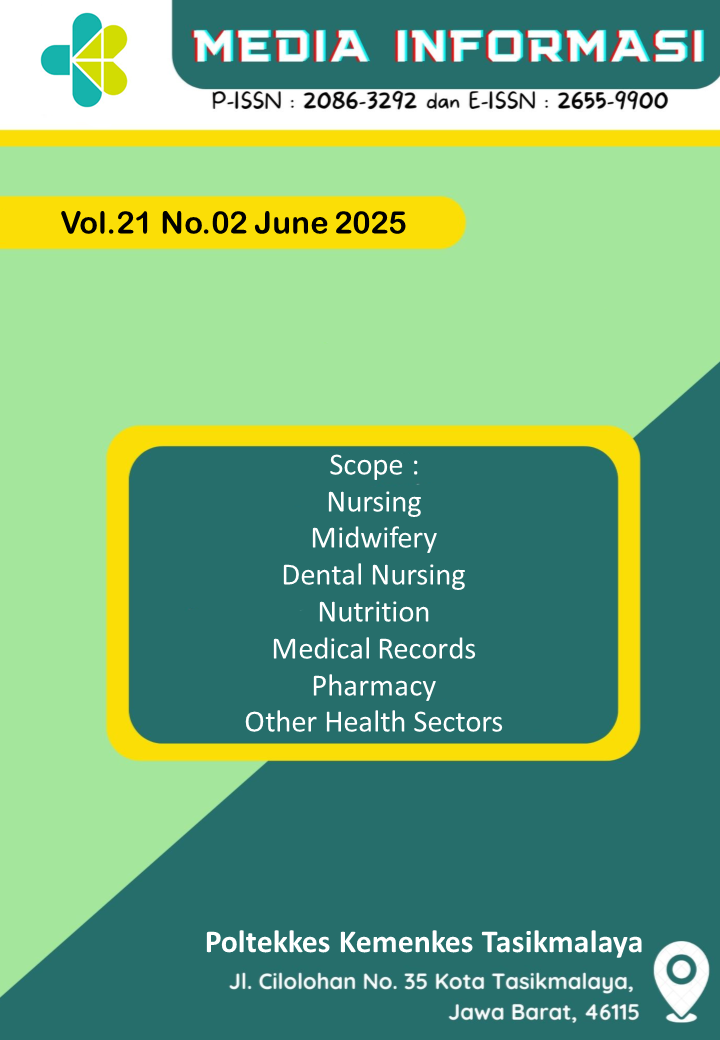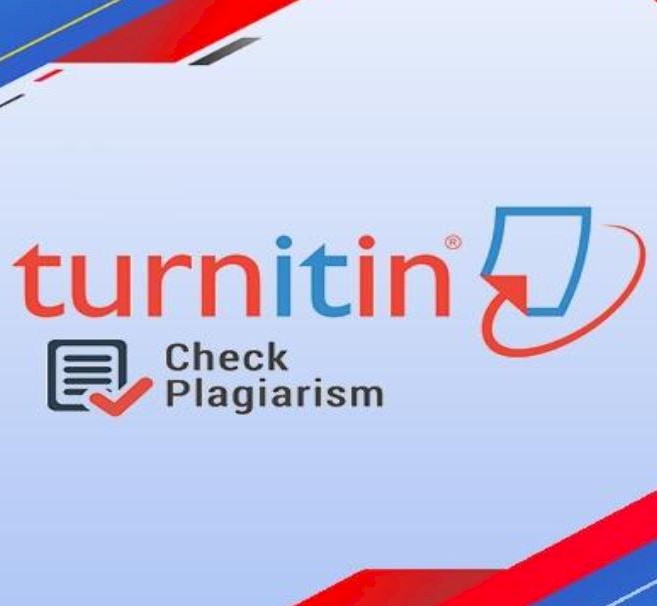Breastfeeding Self-Efficacy as a Predictor of Exclusive Breastfeeding Success in Mothers of 6–24-Month-Old Toddlers in Rural Indonesia
DOI:
https://doi.org/10.37160/mijournal.v21i02.861Keywords:
Breastfeeding, exclusive, Self-Efficacy, ToddlersAbstract
Exclusive breastfeeding coverage in Indonesia is still low (29.5%). The failure of exclusive breastfeeding is influenced by several factors, one of which is self efficacy. Mothers who have a high level of breastfeeding self-efficacy tend to breastfeed until the age of 6-12 months. This study aims to determine the relationship between the level of breastfeeding self-efficacy with the success of exclusive breastfeeding in mothers breastfeeding toddlers aged 6-24 months in Bunijaya Village, Cianjur. This research design is analytic correlation with cross sectional design. Data were collected from 70 respondents who were determined based on total sampling technique. The results showed the majority of mothers had high BSE (92.9%), and most mothers breastfed exclusively (97.1%). There is a relationship between the level of breastfeeding self-efficacy with the success of exclusive breastfeeding (p = 0.004., CI 95%). Based on the results of this study, it is concluded that there is a relationship between the level of breastfeeding self-efficacy with the success of exclusive breastfeeding in breastfeeding mothers of toddlers 6-24 months in Bunijaya Village, Cianjur. It is hoped that this research can be developed by raising other variables besides breastfeeding self-efficacy with the success of exclusive breastfeeding
Downloads
References
Achadi, E. L. (2014, November 25). Periode kritis 1000 hari pertama kehidupan dan dampak jangka
panjang terhadap kesehatan dan fungsinya. Kursus Penyegar Ilmu Gizi PERSAGI, Yogyakarta.
Bahriyah, F., Putri, M., & Jaelani, A. K. (2017). Hubungan pekerjaan ibu terhadap pemberian ASI eksklusif
pada bayi di wilayah kerja Puskesmas Sipayung. Jurnal Endurance, 2(2), 113–118.
Bandura, A. (2007). Self-efficacy: The exercise of control. W.H. Freeman and Company.
Dennis, C. L. (2010). The Breastfeeding Self-Efficacy Scale: Psychometric Assessment of the Short Form.
Journal of Obstetric, Gynecologic & Neonatal Nursing, 39(6), 734–744.
Dennis, C. L. (2010). Development of the breastfeeding self-efficacy theory. Journal of Obstetric,
Gynecologic & Neonatal Nursing, 39(6), 734–744.
Departemen Kesehatan Republik Indonesia. (2009). Air susu ibu (ASI) dan ketahanan pangan.
http://gizi.depkes.go.id/wp-content/uploads/2012/05/ASI-dan-Ketahanan-Pangan12.pdf
Devita, A., & Dewi, C. (2019). Faktor-faktor yang mempengaruhi kelancaran produksi ASI. Jurnal Ilmu
Kesehatan, 4(1), 45–50.
Dinas Kesehatan Provinsi Jawa Timur. (2015). Profil kesehatan Provinsi Jawa Timur 2015.
https://dinkes.jatimprov.go.id
De Roza, M. J. G., Fong, M. M. K., Ang, M. B. L., Sadon, M. R. B., Koh, M. E. Y. L., & Teo, M. S. S. H. (2019).
Exclusive breastfeeding, breastfeeding self-efficacy, and perception of milk supply among mothers in Singapore: A longitudinal study. Midwifery, 79, Article 102532. https://doi.org/10.1016/j.midw.2019.102532
Fahriani, R., Rohsiswatmo, R., & Hendarto, A. (2014). Faktor yang memengaruhi pemberian ASI eksklusif
pada bayi cukup bulan yang dilakukan inisiasi menyusu dini (IMD). Sari Pediatri, 15(6), 366–371.
Feriyal, F., Dewina, M., & Wati, W. (2023). Faktor-faktor yang mempengaruhi ibu tidak memberikan ASI
eksklusif di Desa Sukra Wetan Kecamatan Sukra Kabupaten Indramayu tahun 2022. Nautical:
Jurnal Ilmiah Multidisiplin Indonesia, 1(11), 1407–1413.
Fikawati, S., Ahmad, S., & Karima, K. (2015). Gizi ibu dan bayi. RajaGrafindo Persada.
IDAI. (2013). Pemberian susu formula pada bayi baru lahir. Ikatan Dokter Anak Indonesia.
https://www.idai.or.id/artikel/klinik/asi/pemberian-susu-formula-pada-bayi-barulahir
Jamaludin, H., Titaley, C., Tando, Y., & Tahitu, R. (2022). Hubungan efikasi diri ibu dengan pemberian ASI
eksklusif pada bayi usia 0–6 bulan di wilayah kerja Puskesmas Waihaong, Kota Ambon. PAMERI,
(1), 27–35. https://ojs3.unpatti.ac.id/index.php/pameri/article/view/6007
Kementerian Kesehatan Republik Indonesia. (2019). Profil kesehatan Indonesia tahun 2015.
https://pusdatin.kemkes.go.id/resources/download/pusdatin/profil-kesehatan-
indonesia/Profil-Kesehatan-Indonesia-2015.pdf
Mufdlilah. (2017). Kebijakan pemberian ASI eksklusif: Kendala dan komunikasi. Nuha Medika.
Ngo, L. T. H., Chou, H. F., Gau, M. L., & Liu, C. Y. (2019). Breastfeeding self-efficacy and related factors in
postpartum Vietnamese women. Midwifery, 70, 84–91.
https://doi.org/10.1016/j.midw.2018.12.014
Notoatmodjo, S. (2010). Promosi kesehatan dan ilmu perilaku. Rineka Cipta.
Notoatmodjo, S. (2018). Metodologi penelitian kesehatan. Rineka Cipta.
Pollard, D., & Guill, M. (2010). The relationship between baseline self-efficacy and breastfeeding
duration. Southern Online Journal of Nursing Research, 9(4).
Poppy, T. A. (2020). Hubungan breastfeeding self-efficacy dengan pemberian ASI eksklusif pada ibu
primipara di wilayah kerja Puskesmas Andalas Kota Padang tahun 2019 [Diploma thesis,
Universitas Andalas].
Profil Kesehatan Indonesia. (2020). https://doi.org/10.1192/bjp.112.483.211-a
Putri, A. S., & Sudarmiati, S. (2023). Gambaran breastfeeding self-efficacy pada ibu menyusui usia remaja
[Undergraduate thesis, Universitas Diponegoro].
Rustika, I. M. (2012). Efikasi diri: Tinjauan teori Albert Bandura. Buletin Psikologi, 20(12), 19–25.
Sugiyono. (2017). Metode penelitian kuantitatif, kualitatif, dan R&D. Alfabeta.
Susanti, K., Lisviarose, L., & Ningsih, R. N. (2022). Hubungan breastfeeding self-efficacy (BSE) terhadap
keberhasilan pemberian ASI eksklusif pada ibu menyusui di wilayah kerja Puskesmas Rejosari
Kota Pekanbaru. Al-Insyirah Midwifery: Jurnal Ilmu Kebidanan, 11(1), 37–42.
https://doi.org/10.35328/kebidanan.v11i1.2127
Wati, I. (2022). Perbandingan nilai breastfeeding self-efficacy pada ibu menyusui di RSSIB dengan non-
RSSIB Kota Makassar. Jurnal Penelitian Sains dan Kesehatan Avicenna, 1(2), 1–5.
Yuniarti, S. (2015). Asuhan tumbuh kembang neonatus, bayi, balita dan anak prasekolah. PT Refika
Aditama.
Downloads
Published
How to Cite
Issue
Section
License
Copyright (c) 2025 marjani khoirunnisa, Norma Nurrohmah, Euis Nurendah

This work is licensed under a Creative Commons Attribution-ShareAlike 4.0 International License.












